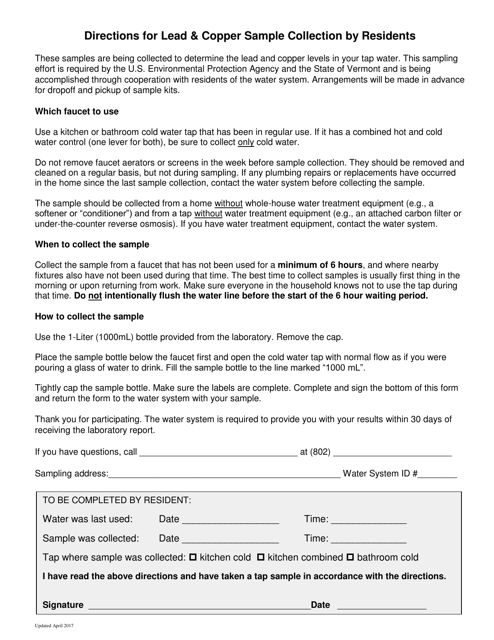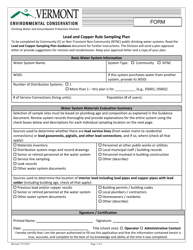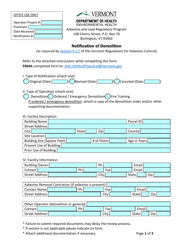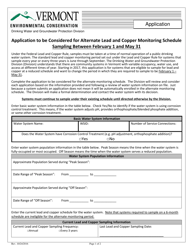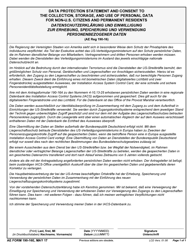Directions for Lead & Copper Sample Collection by Residents - Vermont
Directions for Lead & Copper Sample Collection by Residents is a legal document that was released by the Vermont Department of Environmental Conservation - a government authority operating within Vermont.
FAQ
Q: What is lead and copper sample collection?
A: Lead and copper sample collection is the process of collecting water samples to test for levels of lead and copper.
Q: Why is lead and copper sample collection important?
A: Lead and copper can leach into drinking water from pipes and fixtures. Testing helps ensure that water is safe to consume.
Q: Who should be involved in lead and copper sample collection?
A: Residents in Vermont should participate in lead and copper sample collection.
Q: How often should lead and copper sample collection be done?
A: Lead and copper sample collection should be conducted every three years in Vermont.
Q: How can residents in Vermont collect lead and copper samples?
A: Residents can collect lead and copper samples by following the directions provided by the local water system or regulatory agency.
Q: Is there a cost associated with lead and copper sample collection?
A: The cost of lead and copper sample collection is typically covered by the local water system or regulatory agency.
Q: What should residents do with the collected lead and copper samples?
A: Residents should follow the instructions provided by the local water system or regulatory agency for submitting the samples for testing.
Q: What happens after the lead and copper samples are tested?
A: The water system or regulatory agency will notify residents of the test results and provide guidance if any further action is needed.
Form Details:
- Released on April 1, 2017;
- The latest edition currently provided by the Vermont Department of Environmental Conservation;
- Ready to use and print;
- Easy to customize;
- Compatible with most PDF-viewing applications;
- Fill out the form in our online filing application.
Download a printable version of the form by clicking the link below or browse more documents and templates provided by the Vermont Department of Environmental Conservation.
